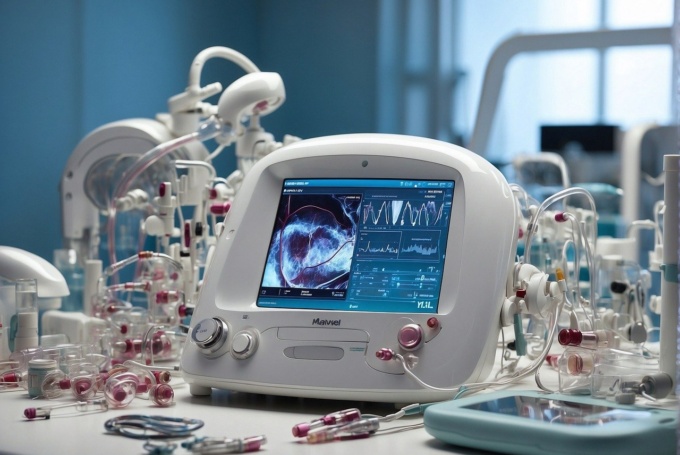Our Industry Innovators series interviews senior leaders across various medical and life science industries, exploring the latest trends, upcoming technologies and pressing hot topics that are shaping the future.
I help Dental Manufacturers hire commercial teams & leaders across the US and recently had the opportunity to speak to Dentreads Founder Sharad Sahai and Executive Vice President Shy Kottal, finding out their thoughts on the 3D Printing industry and how technology is shaping the future of the industry.
Watch the full interview here or read the transcript below:
So, first it’s great to meet you both. If you want to start just by introducing yourselves and a little bit on your background. And then we’ll go into sort of more about who didn’t read out and your plans for the future.
I have been working in the field of dental, imaging, and technology the last 15 plus years.
Pretty much exactly the same background. But I’m also a patient medial gist. 15 to 20 years I’ve been in this field. It just happens to be in a little bit different capacity than what he was doing. So, we kind of are each other’s strength and weaknesses.
Tell me who Dentread are and what it is you guys do.
Dentread is a digital dentistry platform that deals with patient image, data management and services that originate from the patient image data. The idea is that with more and more devices, hardware devices, digital devices in the dental offices, dental labs, which often come from different vendors or different manufacturers with better 3D printing, with better in house applications of various appliances given to patients. There was a gap in terms of not only managing the patient data from different disparate sources that don’t talk to each other, but also storing and sharing it archiving it and getting access to services. So that’s the gap that we are filling with the entry.
That’s exactly what we are – an image management platform that renders services in various aspects of digital dentistry. There is no part of imaging or designing to delivery that we don’t touch. We are not a manufacturer, but we touch all aspects of diagnostics, all aspects of in house clinical, not even just in house even to the lab as well. We become a through and through a turnkey solution for between offices, labs imaging, vendors, devices, etc.
In terms of the idea, did you come up with it yourself? Is it something you spoke about for a long period of time?
Both of us share the background of imaging and dental imaging, we also happen to work with implants and digital prosthetics and have a good observation of that space in terms of how imaging is being used for image, guided in implants and digital prosthetics. And thanks to that experience, we could both identify a lot of in that whole space, which is what prompted us to think of a more holistic solution like entry, which would not only fill in those gaps, but also extend the whole platform or data management to not just implant log, but also lab prosthetics, authentic and diagnostics, which is what the dental office of the dental ecosystem is all made off. That’s how we got into it.
That give us a motivation to venture into something where you’re able to not you don’t really have to go ahead and disrupt a whole lot of things, but you can make things better by just bringing things together. Just kind of way the way it’s being done. And we consider we consider a lot of new things are going to happen, you know. And fortunately, now we have really printed in the mix as well. Yeah. It makes the process much more complex, and our intent is to simplify that as much as possible.
Is your aim to focus on just the US? Or are you going to go globally? What are your plans for this?
So we are already operational in the United States market and in the Indian market. And we’re getting into the European market slowly in terms of the platform because of the complete cloud capability and access anytime anywhere. Obviously, it’s a global platform. We do intend to extend our access and services across geographies. However, we start with the US market and the Indian market, which is where we have our strengths. And we’ve made good inroads into these markets. But next step is to consolidate our position in these markets. Getting to as many market segments that we can cater into, whether it’s dental labs, whether it’s networks, whether it’s alliances and partnerships with device manufacturers and then parallel, we want to get into the institutional and ecosystem also globally.
So how we found those challenges and has it been a challenge between concern stages?
So, the maturity of the markets, right, that’s one of the biggest profound differences that you find you look at Asia Pacific. You’re probably looking at a lot of conversion from analogue & digital itself. So, the adoption cycles are much different. Whereas in the US, you have our western market. We developed markets that a document cycle is completely different. I mean, you might be challenged with numerous products in the market already, compatibility with different products choices that’s offered to the customers. So, we do see those differences. But the commonality between all these things are dentistry. The challenges & the needs are the same, the patients are demanding almost the same things that better care, better value. The dentist have the same intention of doing well to the patient. So, I think we have evolved into wherever we are touching.
Our goal has been to create a universal workflow. That is that can be mastered without in difficulty. So, I think we are successful at that point where we are able to not really tailor the workflow, but just tailor the business offer.
So how have you found obviously being in the US and how do you plan to take that further?
We are small, we are a new entrance. We are a new player, new product. We must create the value proposition. We must cut out the noise. And there are several unique challenges, not just the US market itself. And I’m sure everybody faces the same challenges in one way or another. But we are a small player for now within the U.S. Market.
Are you planning on looking at labs first?
So, the lab on the dental lab space is one of the media for us to get to the dental offices. However, we have not just the lab space, but we also are directly beginning to work with. So, networks where which become channels for us to reach to a lot of dental offices. And partly we also have integrations that we have either finalized or we are in the process of just finishing with device manufacturers of intro, scanner devices who also become a very important medium to take the entry right into the dental office.
Are you able to quickly into interchange all these new technologies?
So that’s going to be a huge enabler for a platform, like ours. Because yeah, as the material science has evolved as the devices have become better. And the dental offices want to invest and do more of the stuff in house. That’s where we come in because we help them manage, not only their patient images, but we also help them get access to services for all kinds of things that they may want to make with a real printer. Whether it’s a logical guide, whether it’s crowns and bridges, whether it’s dancers, night, guards, aligns, any of those things, they will lead us.
Yeah. 100%. We are looking forward to that. One of the trends in in consumption. Often state stuff is changing. The patients are getting they need a little bit more quicker products to be delivered to them. So, when of course, their officers want to deliver them fast, we enable we are the folks that can come in without any external challenges without any training without any additional significant addition to their cost. And that being one of our one of our key components. We want to keep this we want to increase the base of access a post opinion product, just catering to the very high end. That’s not what our goal is. We want this to be more equitable in fashion tool. Almost everybody who wants to adopt new 3D printing give it, give patients better, better care, better. Satisfaction put down around times. So, we become the enabler just like you mentioned previously, obviously, in 10 years, you still want to be known as being relatively quite small.
Where do you see yourself in the next 10 years?
So, I think in the next 10 years we would be a significant first mover in the space of open vendor agnostic image management. We would be the leaders in that space. And we would be the natural choice for every other dental office who wants who owns digital devices and wants to manage their data. And, we intend to expand our service network to an extent where there will be a combination of human driven service backends and technology driven or AI driven services that any user would be able to access in one location that you can.
I think that’s a great description of where we want to be. We want to be that first if somebody is adopting something new immediately within 5 minutes, it should be as easy as getting on anything that’s probably a software but be able to add ourselves into any ecosystem within the 5 minutes of them acquiring something new and be able to make them better at what they’re doing. That’s where we see ourselves in 10 years. We are expecting a very healthy competition. We would also want to when new technologies are coming into the market. We want to be the enabler that puts those new technologies in front of people. Yeah, yeah. We may not develop in 10 years. We may not develop everything in dentistry, that thought possible. Right. There’s going to be so we will have some very curated number of partners in there who brings additional value to the products to.
Do you plan on partnering with anyone now or will that be something down the line?
We are definitely partnering. We have some announcements coming very soon we are working on in the background. We have some serious players in the market that we’re working with. In terms of in terms of devices in terms of new product developers, yeah. Established markets. I can say 70% of dentistry is still fragmented, right? I mean, it’s you know just a single office or multiple offices then. So, we want to grow in that market as well. We want to be able to solve their problems, but you know, by default we were the not the idea, but the company and our product or service was born at a time when there’s a labour shortage and which has affected, mostly these small enterprises and we want to be there to even cover from that, right? We want a new technology to be able to cover for that.
What do you think to the current dental market now and how it’s been this year?
I’ve been in this field in dentistry for about 20 years. There’s always been ups and downs, right? We’re not a $20,000 or $30,000 product or a $6,000 or any of that. We have a very low barrier of entry. If you are adopting new products, you will need services. And that’s where we come in, right. We are going to make your services better. We are going to enable you to increase that utility value to the product that you’ve added, whether it’s a print CPC or iOS device. If a dentist must let’s say, for example, a 3D printer and then go and buy a CAD license. He’s going to spend another 6 – $10,000 extra would you do that, or would you go as a would you be on a pay as you go service? We are now the reducing the challenge for them to adoption of new technology. So yeah. I think the market will change that is about to happen. Like I said we were born in the time of necessity. So, we think that’s a blessing for us.
How have you seen freely printing change and adapt over the years to where it is now?
So, 3D printing, it started as something that was a luxury for some premium offices and a necessity for dental labs. But even that only the better ones. The bigger size, medium to large size labs could get into those devices and effectively get the return on those investments by using them actively, but over the years, particularly with more affordable and accessible in travel scanner. So digital impression scanners and better biomaterials create printing. The way it has changed in the last 3 to 5 years is phenomenal. Because now there are more directly printable devices, like light guards, clear liners, better materials, getting approvals and passing the compatibility. If you have a good 3 D printing device and you happen to use it well, you could reduce your lab built significantly. You could provide a much better time efficiency to your patience that you know, you could probably entertain a lot more patients that you will not be able to entertain because of positive time in terms of delivering stuff like dentures and so many other things. So, it is already transforming practices that have already understood this and have managed to start implementing or acting upon this are really seeing the benefits. So, I’m pretty confident that with better materials and more affordable 3D printers more accessible in one, then there is no other way that this is going to be more transformative for the industry than most of the things that we’ve seen in the last 2 decodes.
The recent ADA release on their political evaluated panel survey. I just got a hold of this a few days ago. I started reading away over the last weekend. So, 17% of all the respondents had 3D printing. You see 7% of the respondents have been using 3D printing in one way, or the other 57% of the respondents were using in the last couple of years, right? Those 21% of those without the printers are considering buying or renting or leasing or something. So, the numbers the consumption of this is on the right trajectory for the sake of, right? For the growth of the market. So, education, pretty much one of the most important that question has a direct answer. I just can’t see the numbers over here, but it did say I think more than 20% of the respondents also said they will be taking 20 or 30% of the respondents would take some sort of course in 3D printing in the next, so that is good. So, education is a key focus. We will partner with anybody who is willing to partner with us our power.
The way I look at our product is we want to reduce that level of education to a point where it becomes literally, you know. You do not have to do a whole lot of education and you’ve kind of validated this as well. There are folks who have come onto our platform, and we have initially we had to hand hold them and walk them through. And then there were others who and recently a big lab that we were trying to get in and they could not coordinate the time. Unfortunately, they were busy, and they said what, just what to do. And I said, listen, why don’t you just why don’t you just create an account and just go with it and see what it does get it out all by themselves. We definitely want to come in and be able to tell people hey, if there’s a time there’s been no better time to adopt the printing in this. And this is how we are going to make your life easy, not just but also with all the accessory devices.
Are you going to be doing things like trade shows or webinars? What are the plans for that?
Yeah. So obviously we already have a bunch of key opinion leaders who are using the platform who are happy with what they’ve experienced for their own practices and the process of organizing and scheduling webinars, regular webinars, yeah. Getting with educational online, educational endeavours on a frequent basis as far as the trade shows are concerned. We do intend to be there at the mid window upcoming Chicago midwinter. And we will have presence over there. Were there not officially at the ideas this year, but I’m confident that by the time the next idea comes up, we hope to be there. We hope to be there in some of the other major meetings. I would not say a lot of small meetings, but now, yeah, some of the bigger meetings.
For more inspiring stories, check our blog series. Or, learn more about our dedicated dental team and dental jobs.




